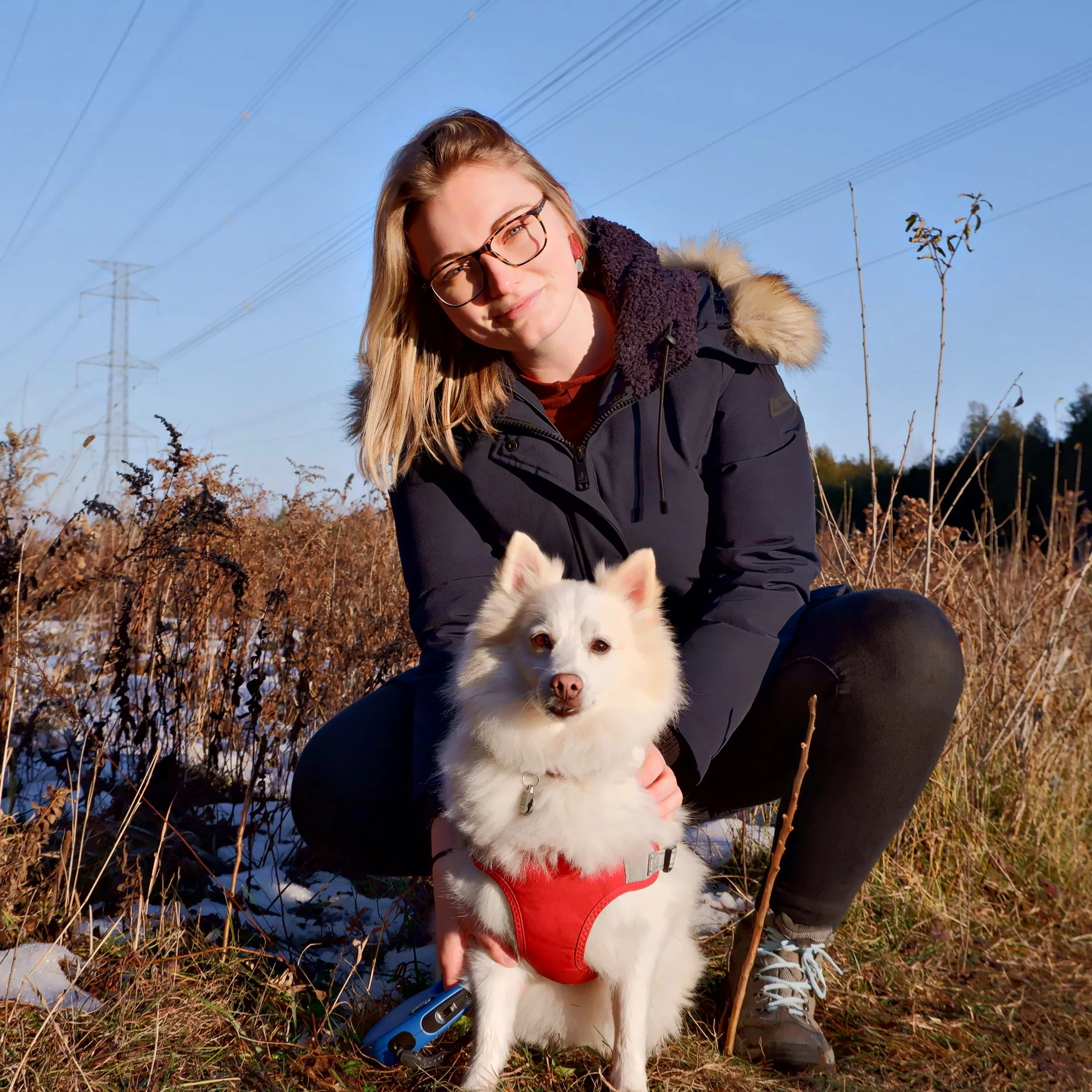Nicole Washuck
MSc Student
Biology, Specialization in Chemical and Environmental Toxicology
nwash037@uottawa.ca
Bio:
I completed my BSc in Biomedical Toxicology at the university of Guelph in 2020 and was excited to continue my studies of toxicology in Dr.Laurie Chan’s lab soon after. I found my passion in the field of toxicology and fell in love with it’s interdisciplinary nature. I believe that science communication and knowledge translation is a key part of the scientific process and was thrilled to find a lab that actively promotes community engagement and perspective. When I am not in lab I enjoying hanging with my best bud (pictured above) and getting into nature any way I can.
Research Project:
It has been well established that arsenic is a threat to public health and has been linked to the development of many diseases, notably cancer. In recent years, small extracellular vesicles which serve as molecular mail for cells have moved to the forefront of biomarker research. My current work is focused on studying the role small extracellular vesicles play in arsenic induced carcinogenesis and identifying candidate biomarkers of arsenic exposure. This project follows alongside the labs current work assessing the health impacts of arsenic exposure with Yellowknife Health Effects Monitoring Program (YKHEMP).
Publications:
Washuck N.L., Hanson M., Prosser, R.S. (2022). Yield to the data- some perspectives on crop productivity and pesticides. Pest Management Science. Pest Management Science. https://doi.org/10.1002/ps.6782
Sanford, M., Washuck, N., Carr, K., & Rs, P. (2021). Chemosphere Pulsed exposure of the macrophyte Lemna minor to herbicides and the may fl y Neocloeon triangulifer to diamide insecticides. Chemosphere, 273. https://doi.org/10.1016/j.chemosphere.2020.128582
Graetz, S., Martin, W., Washuck, N., Anderson, J., Sibley, P. K., & Prosser, R. S. (2021). Deterministic risk assessment of firefighting water additives to terrestrial organisms. Environmental Science and Pollution Research, 20883–20893. https://doi.org/10.1007/s11356-020-12061-8

